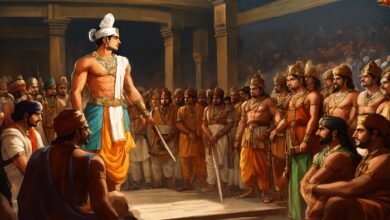Story for Freedom: Solving the Enigma of Bells of Gal by Nguyen Si Kha (2022)

Few voices in the complex fabric of Vietnamese modern literature resound more than Nguyen Si Kha’s. Kha is a novelist and poet who explores social problems through vivid words. His 2022 opus, “Bells of Gal,” has captured the attention of reviewers and fans alike. This moving tale, rich with magical realism and historical allusions, crosses national borders to provide a global reflection on memory, freedom, and the enduring power of loss.
Set against the backdrop of a fictional Vietnamese village situated amidst beautiful rice terraces and ancient banyan trees, “Bells of Gal” weaves a compelling narrative around the intriguing protagonist, Lan. Ancient bells murmur secrets only Lan can hear, providing comfort to Lan, an outcast young woman troubled by the anguish of her previous persecution. These bells, charged with the ghosts of long-dead villagers, lead Lan on a journey to unearth the truth about the terrible past of her family—a tragedy concealed by a society divided by secrets and fear—and to break free from the layers of silence around it.
Kha’s skill as a storyteller is rooted in his ability to skillfully combine historical details with imaginative aspects. The bells, full with the voices of the ancestors, open portals to a vanished era where rumours of conflict, exile, and a bloody fight for independence reverberate through the years. Lan encounters the collective shadows that loom over the very basis of her community as well as the ghosts of her own family as she digs deeper into their eerie chimes.
Kha’s detailed descriptions of the natural world provide even more richness to this complex tapestry of individual and collective narratives. The story’s sad tone is emphasised by the eerie melody created by the ubiquitous bells, the ancient banyan trees standing vigil to generations of whispers, and the emerald rice terraces whispering with secrets carried by the wind. With this artistic interaction with the terrain, Kha gives “Bells of Gal” a timeless quality in which the past, present, and future are all intricately entwined.
But Kha’s writing is not just beautiful to look at. It is a powerful instrument for societal criticism. He gently criticises the pernicious consequences of cultural forces and the sneaky nature of silence via Lan’s trip. Lan is hampered in his search for the truth and freedom by the villagers’ unspoken codes of secrecy and fear of retaliation. This makes “Bells of Gal” a potent metaphor for how people try to live up to social expectations—a challenge that is relevant in all historical periods and cultural circumstances.
Still, despite all the darkness and murmur, Kha’s story beats with a steady glimmer of promise. Lan starts to comprehend what true freedom means as she explores the riddles surrounding her history. It is more than just not having any external limitations; it is about having the guts to face one’s own demons, break free from silence, and take back one’s own voice and story. This act of inner freedom becomes a source of empowerment for readers who may be struggling with the constraints of silent traumas or societal demands. This act is brilliantly represented in Lan’s progressive shedding of societal expectations and acceptance of her own distinct personality.
In the end, “Bells of Gal” celebrates both the eternal power of stories and human resiliency. It is evidence of the transforming power of acknowledging one’s past, taking back one’s voice, and discovering freedom in the acceptance of reality. Nguyen Si Kha’s masterwork crosses linguistic and geographical barriers with its engrossing story, poetic prose, and heartbreaking social commentary to provide readers with an intensely touching experience that lasts long after the last page is turned.
Result:
“Bells of Gal” by Nguyen Si Kha is a literary masterpiece that readers everywhere should enjoy. It’s an impactful and enduring book because of its complex narrative, beautiful language, and moving themes of resilience and independence. This story is for everyone who has ever dared to challenge the narratives they’ve been fed and set out on their own road of personal liberation—not only lovers of Vietnamese literature.
FAQs:
What is “Bells of Gal”‘s central theme?
Bells of Gal centres on the quest for individual and collective freedom. It looks at how freedom can come from facing one’s history, severing the bonds of silence, and finding one’s voice again.
What role do the bells have in the narrative?
In the narrative, bells serve as portals to the past, revealing mysteries and directing the main character on her search for the truth. They also represent the everlasting power.




